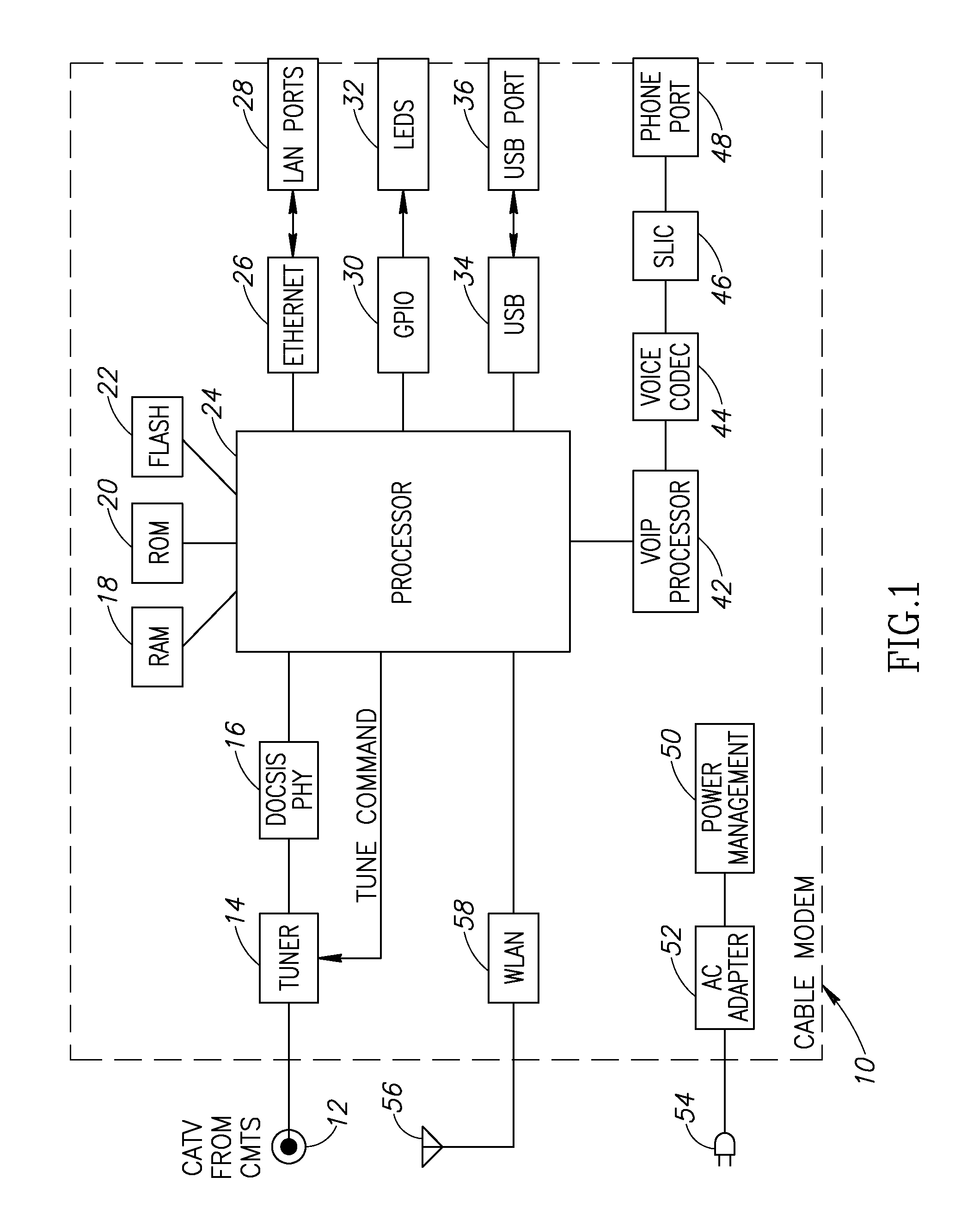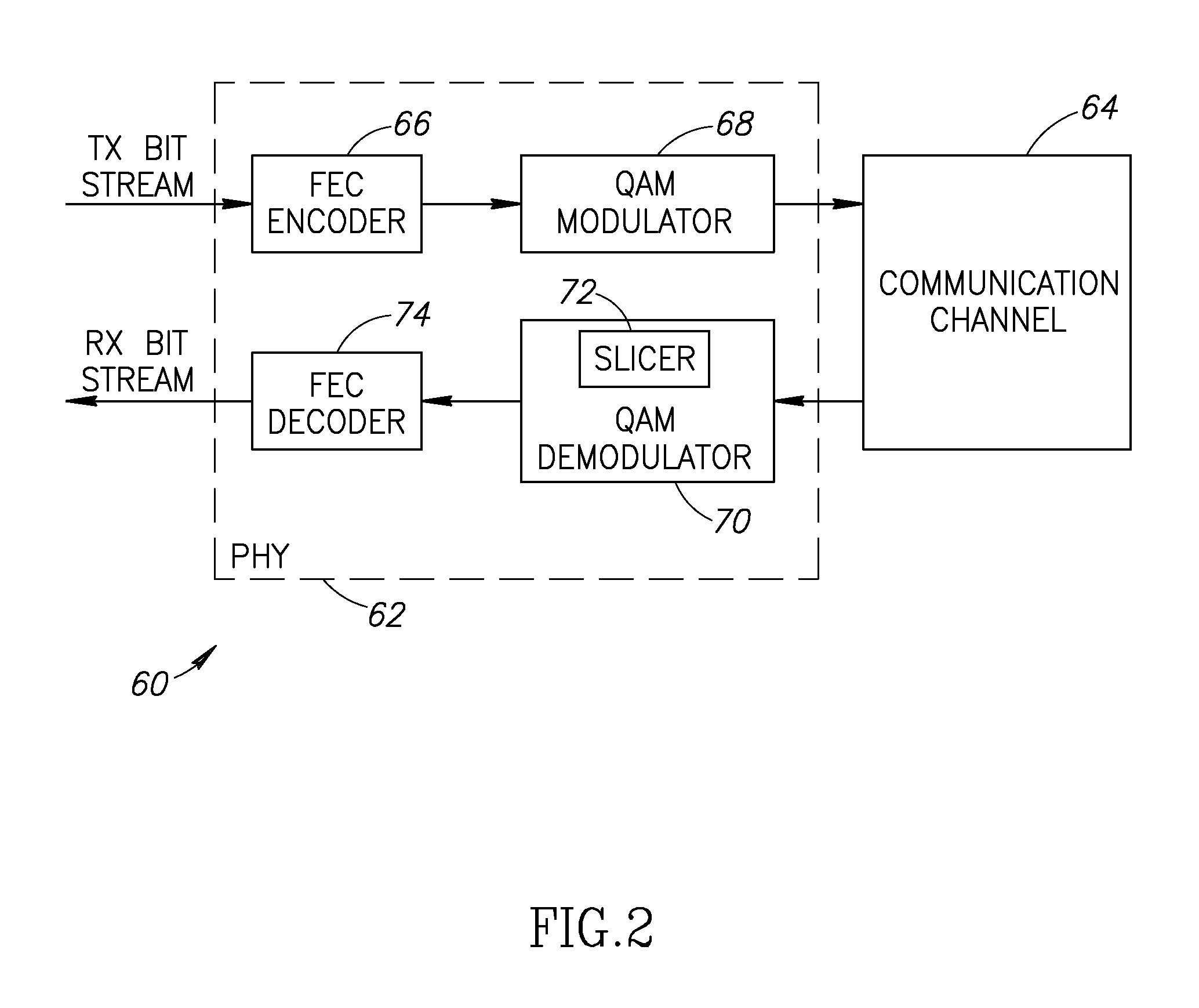Chase algorithm based differential decoder for soft decision Reed Solomon decoding in a QAM system
a differential decoding and soft decision technology, applied in the field of data communication, can solve the problems of potentially and achieve the effects of reducing the number of options significantly, improving system performance, and low design effor
- Summary
- Abstract
- Description
- Claims
- Application Information
AI Technical Summary
Benefits of technology
Problems solved by technology
Method used
Image
Examples
case i
[0077]
[0078]If the previous slicer output point and the current slicer output are both non-boundary points (i.e. all four candidates lie in the same quadrant) (step 110), then the current first and second candidates are applied to differential decoders #1 and #2, respectively (step 116). The output score is set to the current input score (step 118). The method then returns to process the next decoder input point. Thus, in this case, the decoder input effectively passes through the decoder to the output without any changes.
case ii
[0079]
[0080]If the previous slicer output is a non-boundary point and the current slicer output is a boundary point (step 112), then the current first and second candidates are applied to differential decoders #1 and #2, respectively (step 120). The output score is set to the current input score (step 122). The method then returns to process the next decoder input point. Thus, as in Case I above, the decoder input effectively passes through the decoder to the output without any changes.
case iii
[0081]
[0082]If the previous slicer output is a boundary point and the current slicer output is a non-boundary point (step 114), then it is then checked if the current reliability score is bigger than the previous reliability score (step 124). If so, it means that the current input point potentially has a good score and it is preferred to eliminate its second candidate rather than the second candidate of the previous input point. In this case, the current first candidate is applied to both differential decoders #1 and #2 (step 126). In this manner, two of the four options are eliminated. The output score is set to the previous input score (step 128). The method then returns to process the next decoder input point.
[0083]It is noted that because there is memory in each differential decoder #1 and #2, every output is influenced by two inputs. If one input is corrupted, it will effect two output values. Due to the fact that we are deciding the current point in accordance with the previou...
PUM
 Login to View More
Login to View More Abstract
Description
Claims
Application Information
 Login to View More
Login to View More - R&D
- Intellectual Property
- Life Sciences
- Materials
- Tech Scout
- Unparalleled Data Quality
- Higher Quality Content
- 60% Fewer Hallucinations
Browse by: Latest US Patents, China's latest patents, Technical Efficacy Thesaurus, Application Domain, Technology Topic, Popular Technical Reports.
© 2025 PatSnap. All rights reserved.Legal|Privacy policy|Modern Slavery Act Transparency Statement|Sitemap|About US| Contact US: help@patsnap.com



